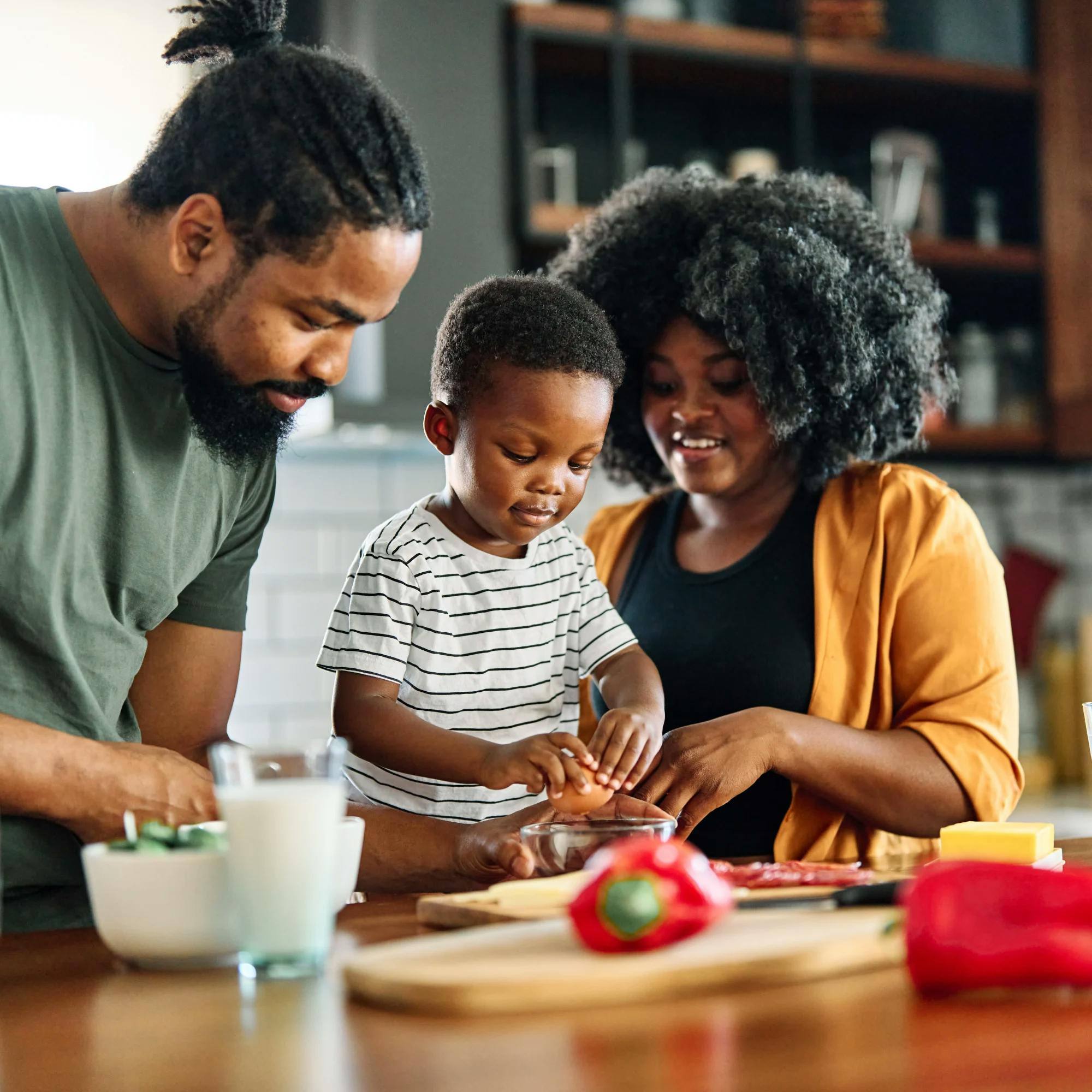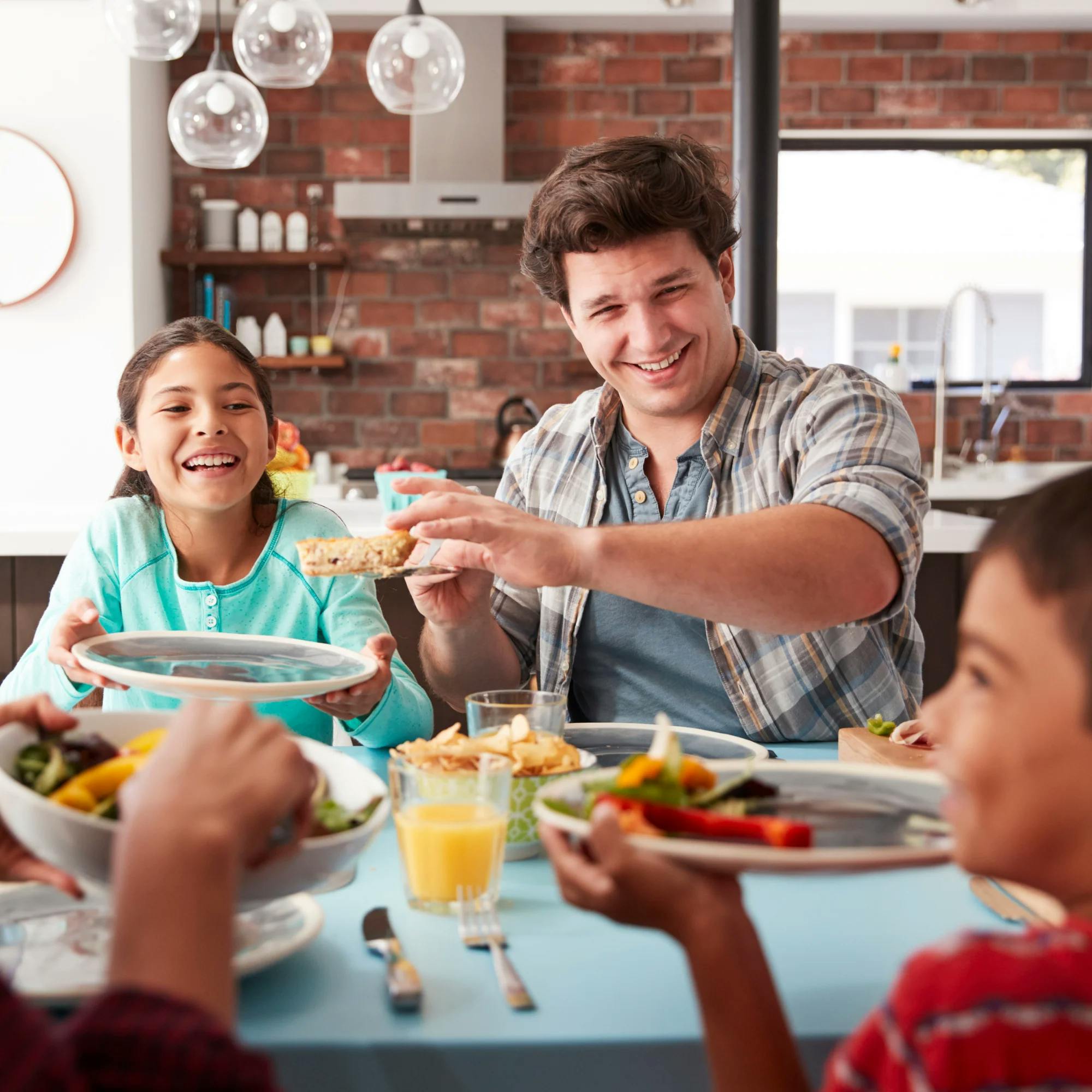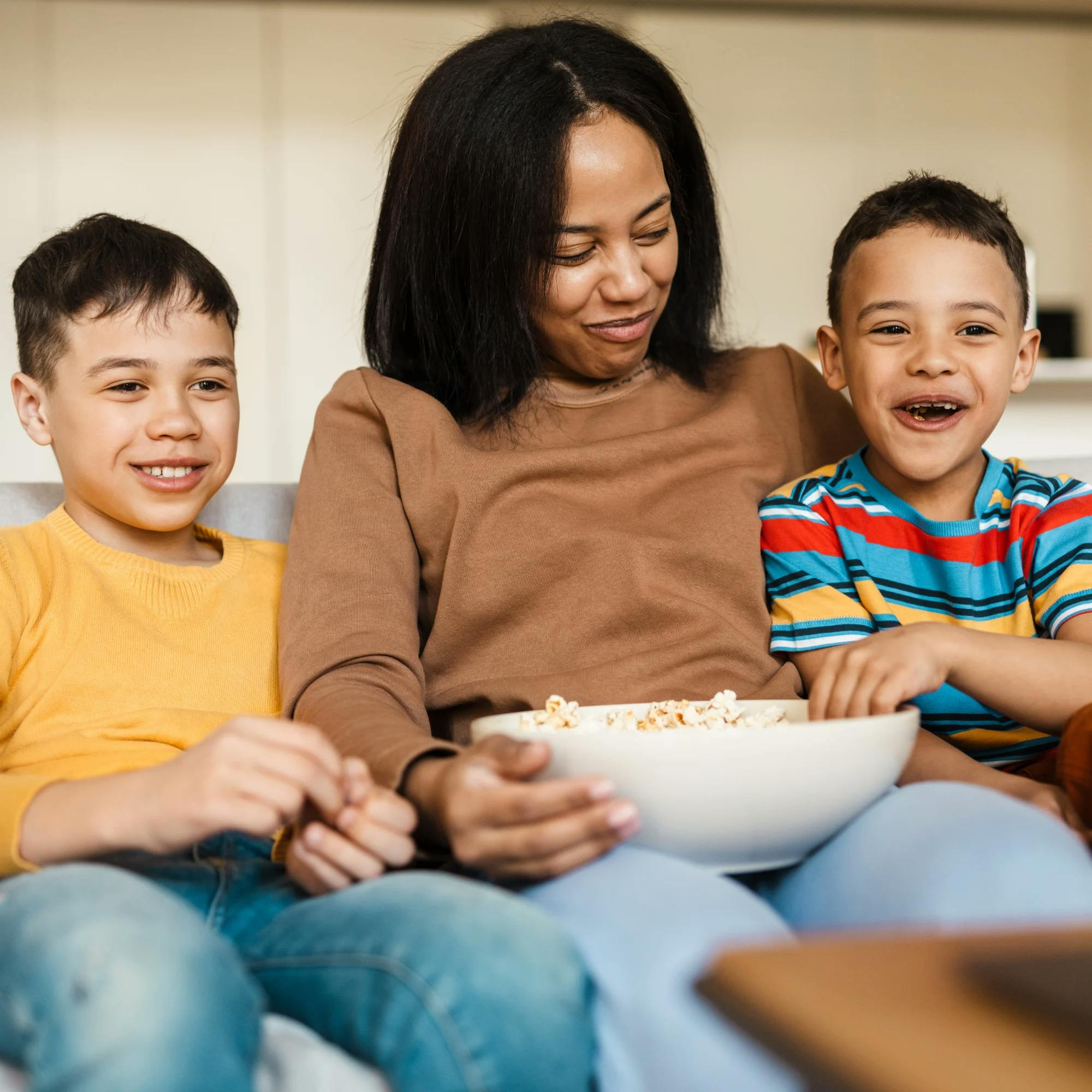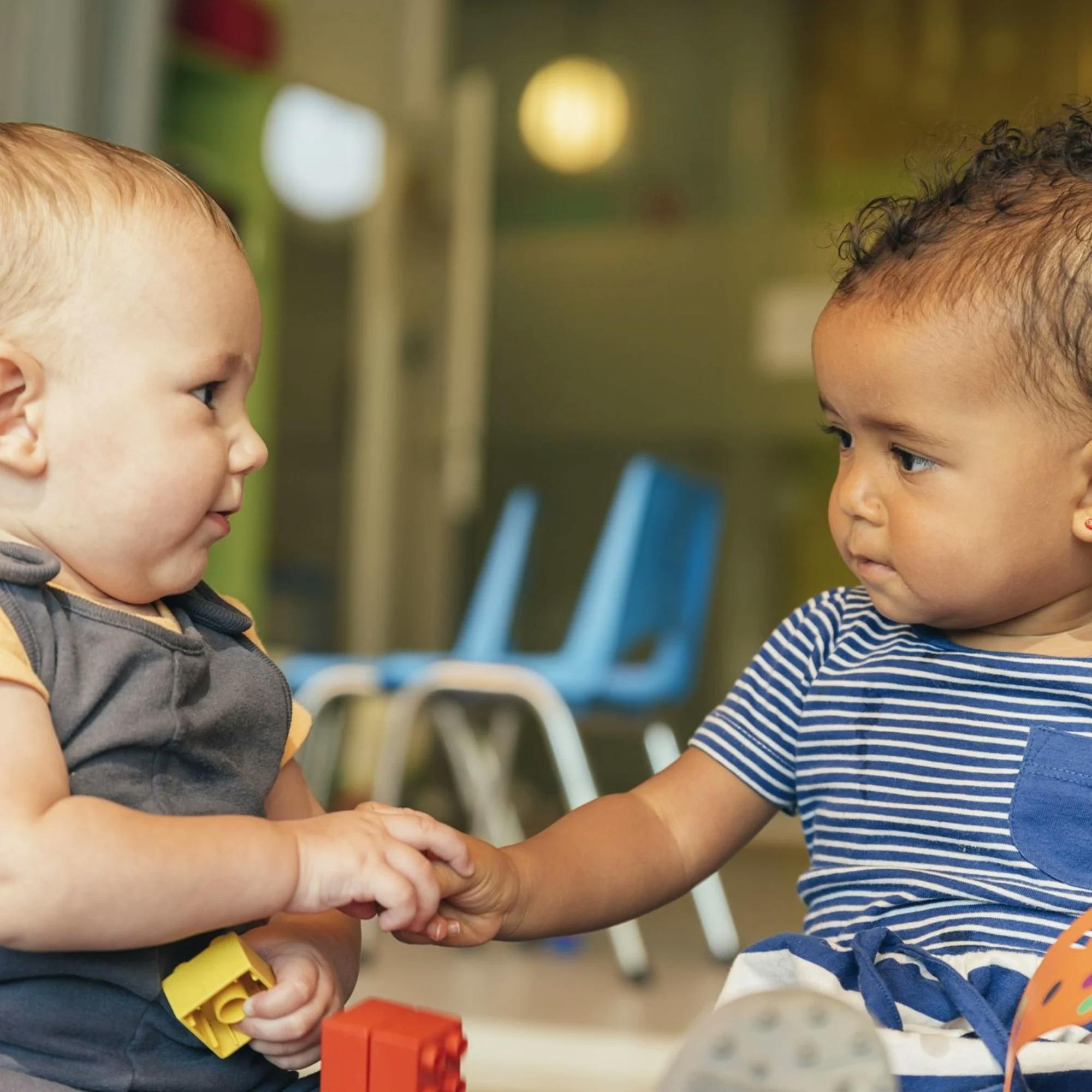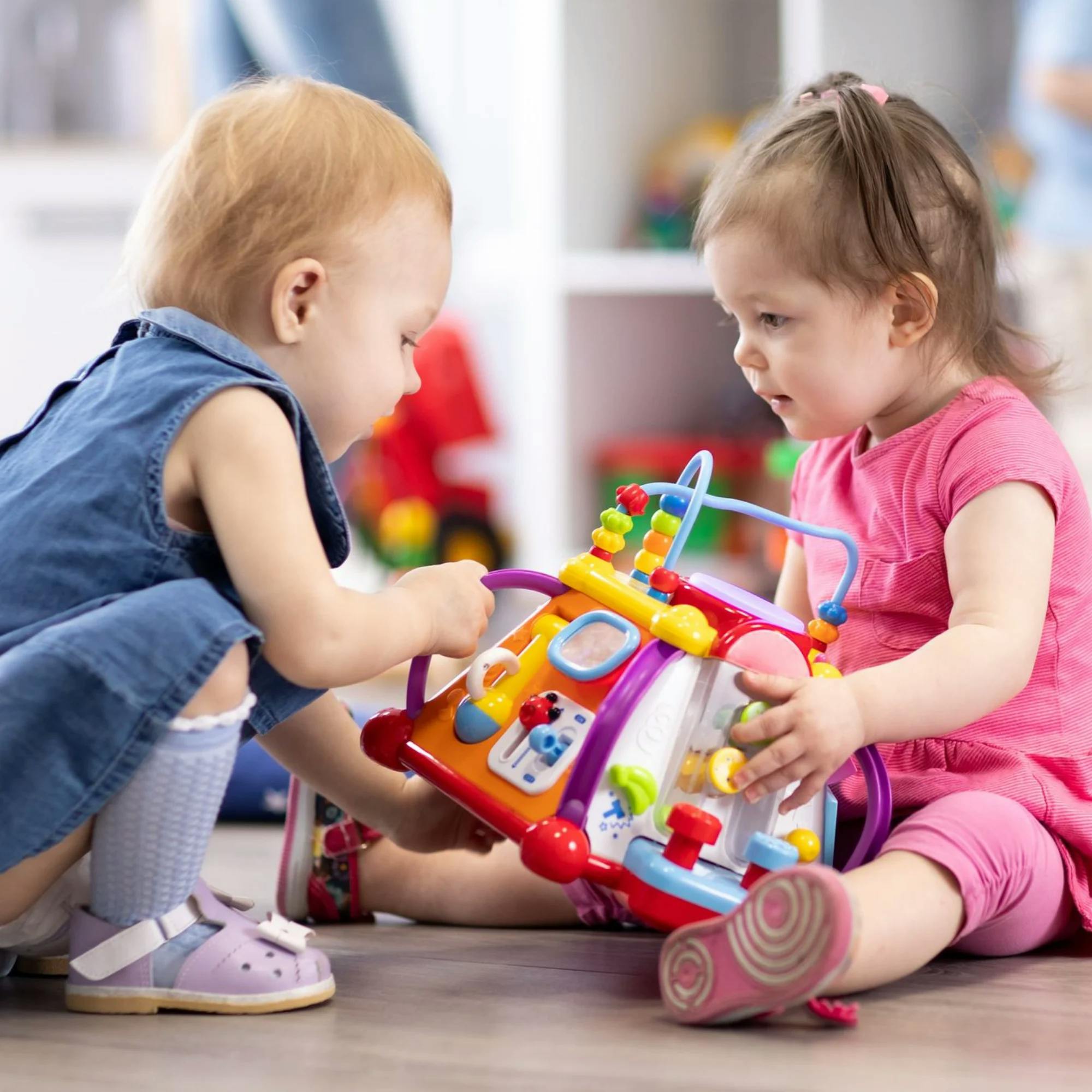Most kids love helping grownups in the kitchen. Although it can get a little messy (!), there are lots of benefits to involving your child in the cooking process! Cooking is a functional life skill to teach your child–and it can also be bonding time for the two of you.
In addition to being fun (and tasty!), cooking offers lots of opportunities to work on speech and language goals and practice what your child is learning in speech therapy. In this article, we walk through some easy ways to do that. Be sure to check out the kid-friendly recipes at the end, too.
8 ways to practice speech and language while cooking
When you work on speech and language skills while making a meal, you increase your child’s participation and engagement. They’ll be more motivated to practice, which helps them make faster progress in speech therapy.
Think about it: Learning becomes more meaningful and relevant when it happens during a hands-on activity like cooking. This experience helps your child develop a better understanding of the concepts they’re working on.
Here are 8 different speech and language skills you can work on while cooking together.
1 Vocabulary development
The cooking process naturally exposes your child to a variety of new words and concepts. Words like “chop,” “boil,” and “measure” might be new to your child until they’re in the kitchen working alongside you.
Expert tip: Talk about the things you and your child are doing throughout the process. This is called “self-talk,” and it’s a powerful strategy speech therapists use to support children’s language development. When you simply narrate what’s happening, you expose your child to rich language and vocabulary–without even having to think about it! Check out this brief video from one of our speech therapists to see a demo of self-talk.
2 Articulation and other speech sounds
If your child is working on speech sounds, you can choose functional and relevant words to focus on during the cooking process. Your child will likely be more motivated to practice their target words while doing a fun activity with you. Here are some examples of cooking-related words that can be used for different speech targets:
/s/ sound – sautee, dice, mince, salt
/s/-blends – slice, stir, steam, squeeze
Multisyllabic words – blender, tomato, frying pan, oven
3 Following directions
Most recipes require more than one step to complete. This is the perfect opportunity to work on following directions with your child! You can incorporate sequencing and time concepts into the directions for extra practice.
For example, you might say, “First, we get the blender out. Then, we plug it in. Before we add the banana to the blender, we have to peel it.” This is a multi-step direction that requires the child to practice and learn the sequential concepts of “first, then, and before.”
Trying these concepts during a hands-on, functional activity like cooking helps your child better learn and understand.


4 Problem-solving
Have you ever started making dinner and then realized you’re missing an ingredient? (We’re embarrassed to admit how many times this has happened to us…) But at that moment, we tend to figure it out, right? This is a great chance to work on problem-solving with your child.
Sometimes we have to substitute one ingredient for another. Maybe the recipe calls for a half-cup of an ingredient, but you only have a quarter-cup on hand. You can talk your child through the process of what to do when we don’t have something we need. Ask them for their ideas to help solve the problem. It’s an opportunity for a great learning experience all around!
5 Attention
Cooking requires concentration! Attention and concentration are important skills for many parts of life, such as school and work. Cooking is a great way to strengthen these skills. As an added bonus, it helps a child learn about safety in the kitchen, such as paying attention to when to turn off the burner or oven.
Expert tip: Use visuals to support your child’s attention skills. Try talking about the numbers on the clock (“When the time says 6:03, we need to turn the oven off and take out the cookies”). Or you can use a timer (“When we hear the timer beep, it’s time to turn the stove off and take the chicken out of the pan”).

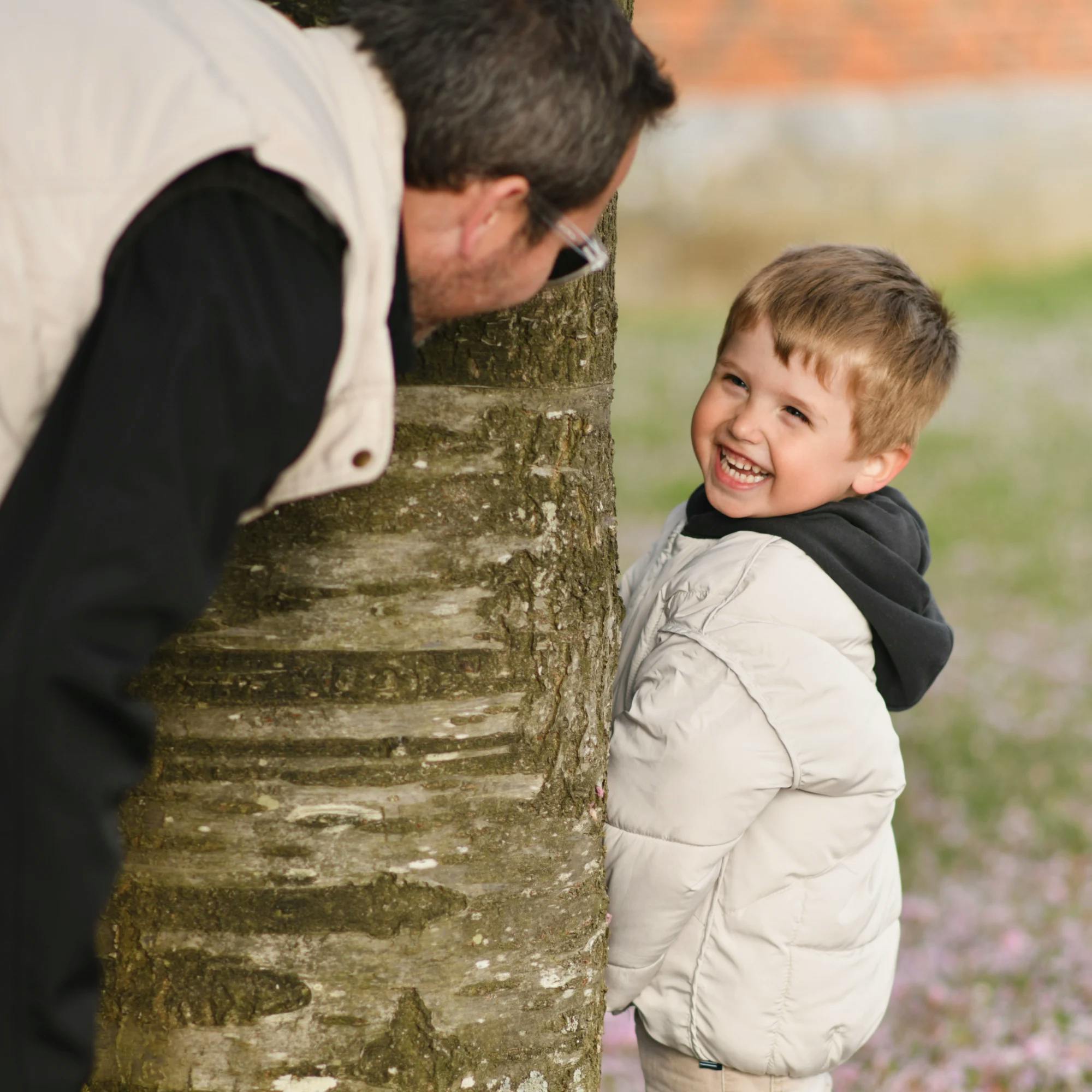
6 Language comprehension and answering questions
Another skill that can be supported by cooking is language comprehension, including the ability to answer questions related to the activity. Cooking is a great time to practice yes/no and WH-questions. Here are some examples:
Who cooked the chicken?
What do we do next?
What did you use to mix?
Where does it go?
When should we turn the oven off?
How do we do it?
Do you like it? (yes or no)
Is it sweet or salty? (This is a choice question that also supports language comprehension!)

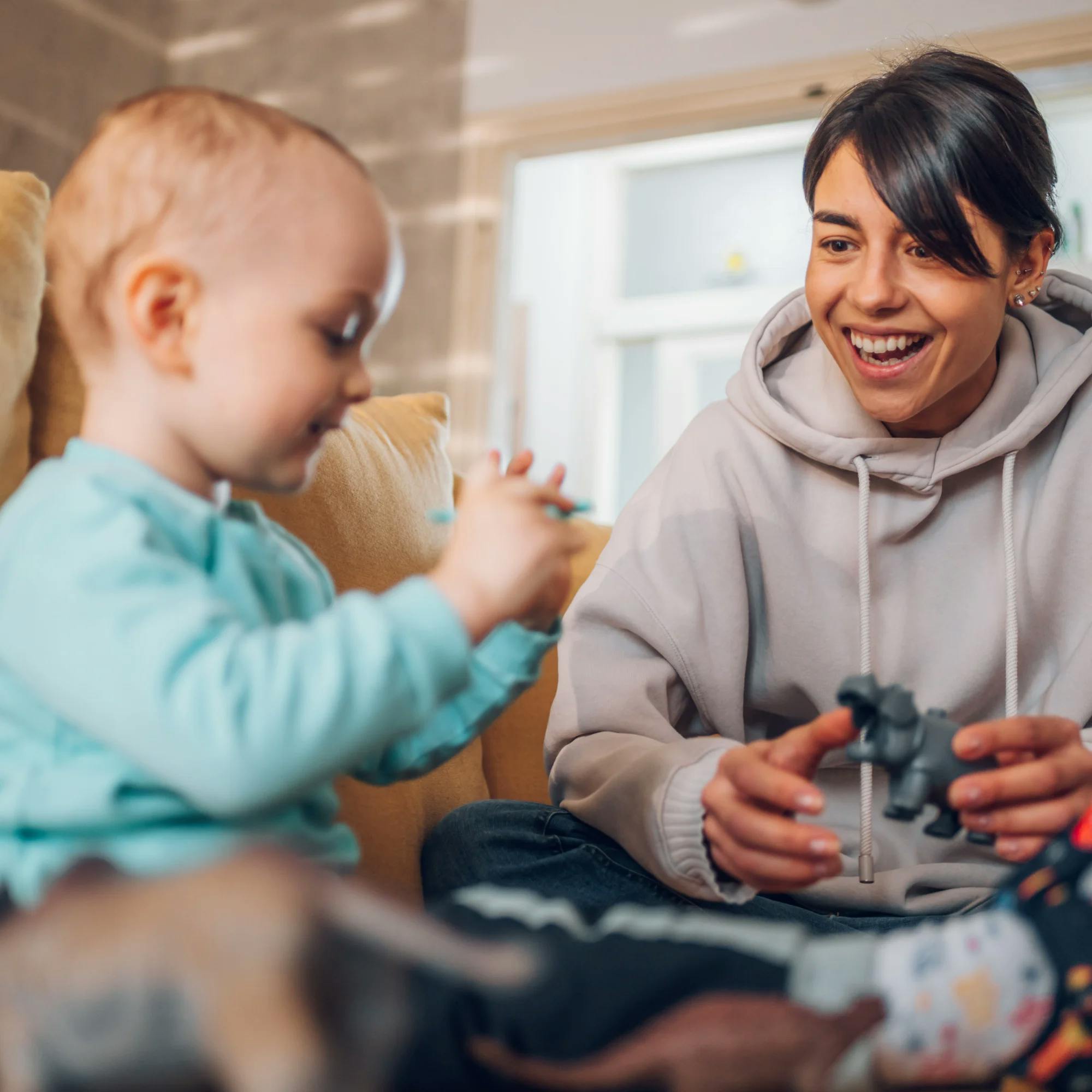
7 Social skills
Is it crazy to think that cooking can help build your child’s social communication skills? It’s true! Cooking with others requires turn-taking, sharing, and teamwork. These are all important social skills!
Taking turns mixing batter, sharing a utensil, or working together to solve a problem all help your child build these skills.
Expert tip: Use this time to teach your child how to say “no, thank you” to a non-preferred food or how to politely say they don’t like something.


8 Early literacy skills
Early literacy skills are the things children learn about reading and writing before ever being able to! Print awareness and narrative skills are just two of the skills you can support while cooking with your child.
Print awareness is the knowledge that written language (letters and numbers) is everywhere, and it carries meaning. This includes knowing how print works, like reading from left to right and top to bottom. Following a written recipe while cooking helps support this essential skill!
Expert tip: Point to the words on the page as you read aloud. You can point out words and numbers you see on labels, too.
Narrative skills refers to a child being able to tell a story or describe events in the correct order. This tells us they understand what they are reading. To support this skill while cooking, encourage your child to tell you about the steps they took to create the recipe. Or, after reading a step together, ask your child open-ended questions (questions that require more than a one-word answer) to get them talking about it.

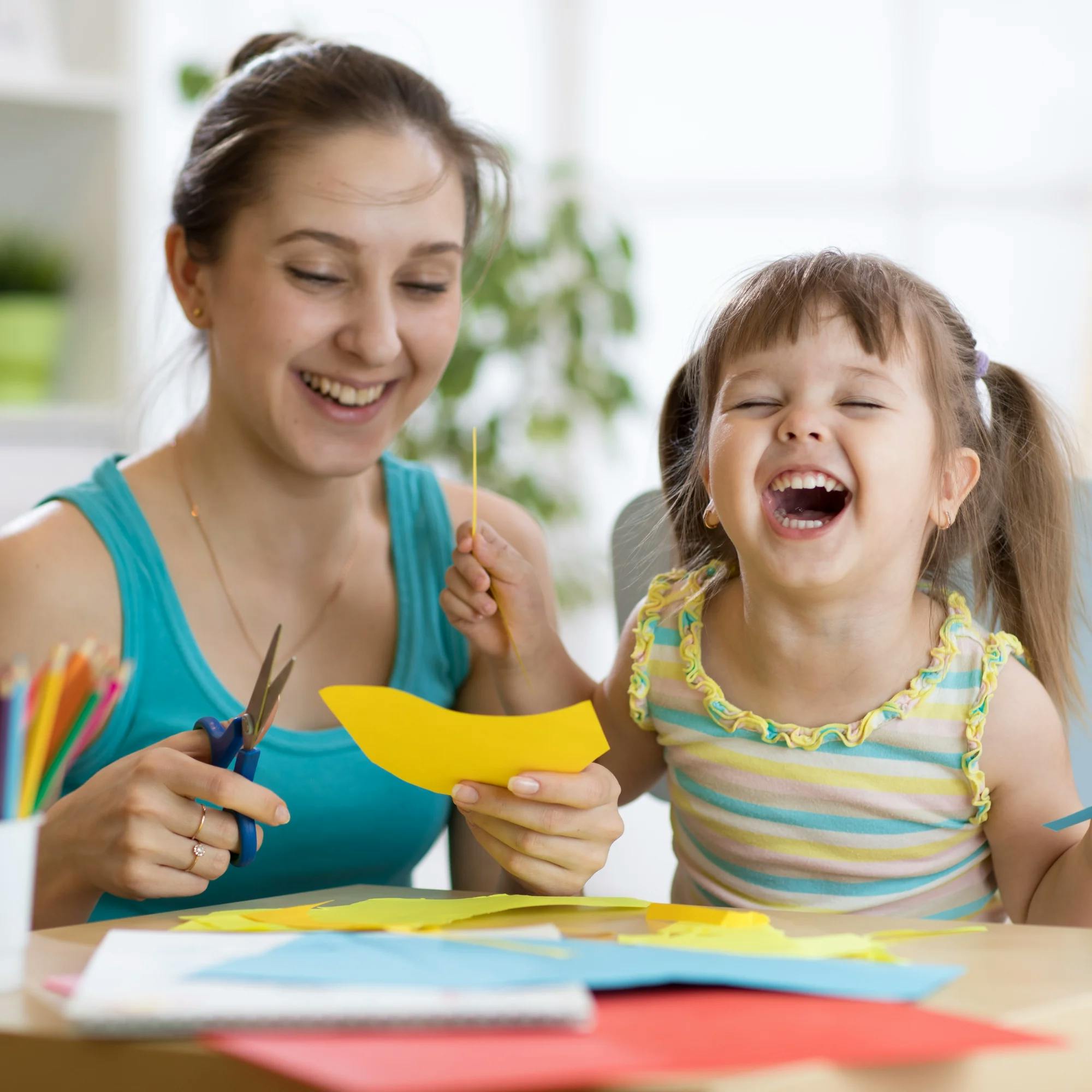
Cooking helps children try new foods
Here’s another big bonus to cooking together. Involving your child in the cooking process gives them an opportunity to explore and interact with foods they might not typically touch or try. This is a trick many speech therapists use to engage children who are picky eaters, without causing a fight or flight response!
While exploring these foods, you can talk about the way they look, smell, feel, and taste, which exposes your child to rich, descriptive language. Involve your child in each step, including deciding on the recipe, creating the grocery list, shopping, preparing the meal, and serving it. Not only are you teaching them essential life skills and working on their speech and language, you’re encouraging them to explore and learn about new foods: win-win-win!

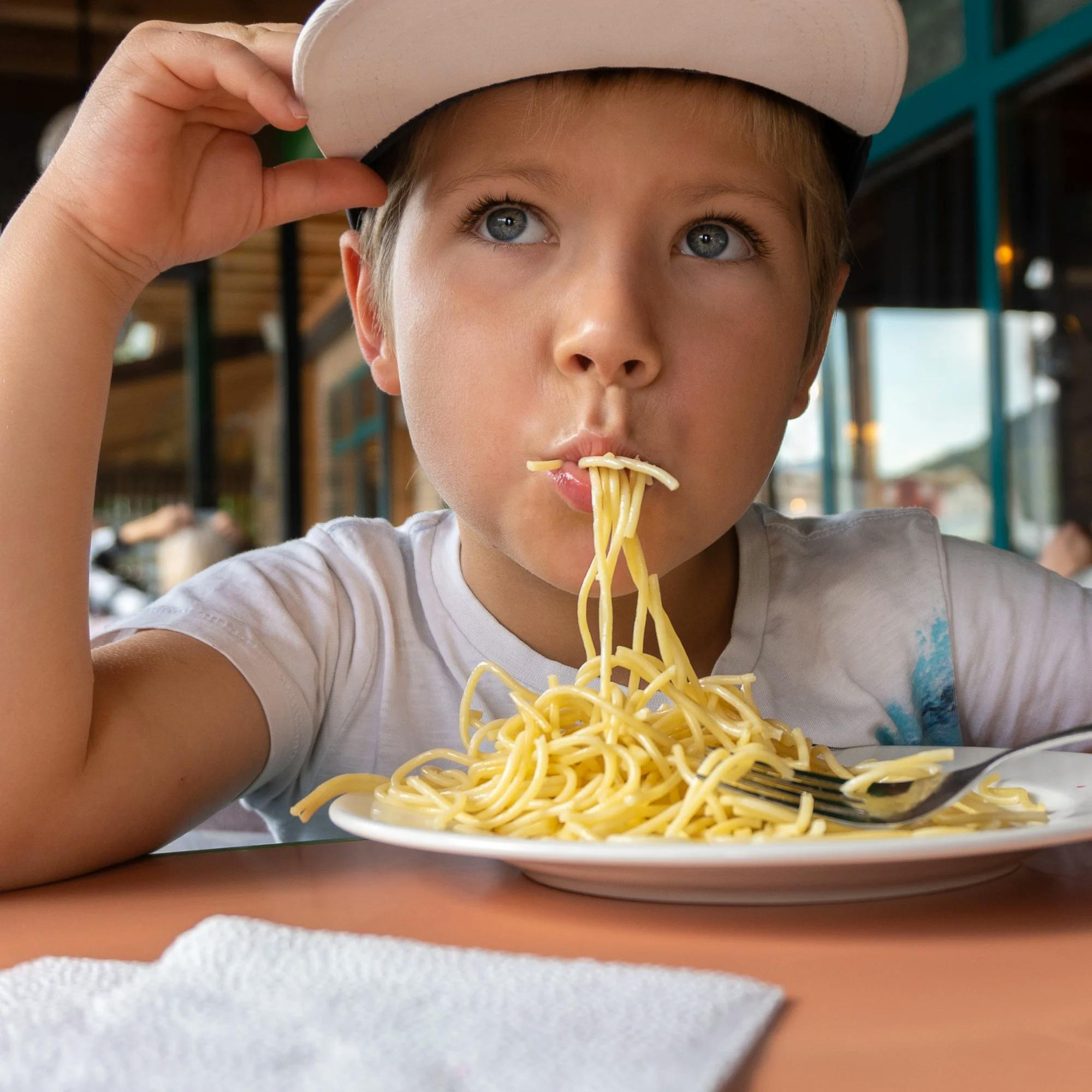
Simple kid-friendly recipes to try
Sometimes you may not have access to a wide range of foods or cooking tools. Or maybe you just don’t feel like making an elaborate meal, especially with a child. We get it! Check out My Plate for simple, healthy recipe ideas whenever you need them.
“No cook” options like these apple sandwiches or this black bean salsa are great options when working with children. Here are some other easy ideas to get you started:
Lemonade
Trail mix
Fruit salad
Pinwheel sandwiches (fillings rolled in a tortilla)
English muffin “pizzas”
Veggies and dip
Fruit and yogurt smoothie
Instant pudding
Ice cream sandwiches
Cookies
In speech therapy, we know that practice activities need to be relevant to make learning meaningful. We hope you take these ideas and have lots of fun creating in the kitchen with your child!
How Expressable Can Help
Concerned your child isn't reaching age-expected milestones? Looking for communication support from a professional? Expressable is a national online speech therapy practice serving children and adults. We treat all major areas of communication and feeding, offer flexible hours including evenings and weekends, and accept most major health insurance plans. We’re proud to have earned more than 3,000 5-star reviews from our clients (4.9/5 average).
Our therapy model is centered on parent and caregiver involvement. Research proves that empowering caregivers to participate in their loved one’s therapy leads to better outcomes. That’s why we combine live, 1-on-1 speech therapy with personalized education and home practice activities for faster progress.
Communication is more than words. It’s how we share how we feel and show who we are. We’re here to help you or your child do just that.
 Alexis Irazoque, M.S., CCC-SLP
Alexis Irazoque, M.S., CCC-SLP